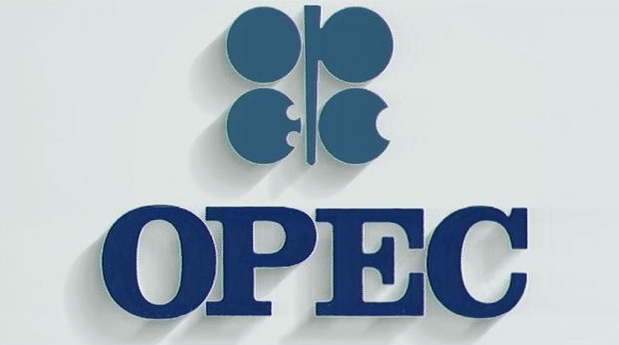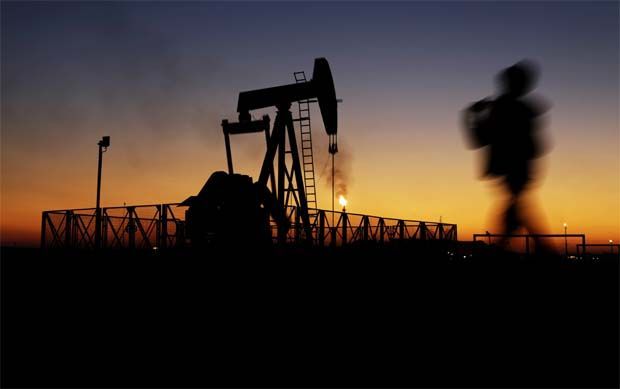Where are oil prices going?
After two years of fighting for market share, the Organization of Petroleum Exporting Countries (OPEC) agreed in November 2016 to cut production by 1.2 million barrels per day, capping output at 32.5 million barrels per day (MBPD). With Non-OPEC producers also agreeing to reduce production by 600 million barrels per day, this should reduce global output by one percent.
Before the agreement, analysts were skeptical about a cut deal, especially with the very public rivalry between Saudi Arabia (OPEC’s largest producer) and Iran (OPEC’s third largest producer). Talks to freeze production had been sunk before by disagreements between the two, and many worried that Iran’s determination to return its production to pre-sanction levels would prevent the deal.
Thankfully, the deal was signed, going a long way to lay to rest side talk that OPEC had lost steam when it comes to controlling the world’s oil market.
As part of the deal, Indonesia has suspended its membership in OPEC, allowing Iran to set its production cap at 3.797 MBPD, almost three percent higher than the 3.69 MBPD it produced in October.
“Before, we were thinking that, optimistically, we could reach market balance at the back-half of 2017 or the front-half of 2018,” Wunderlich Director of Equity Research and Chief Market Strategist, Art Hogan, told Oil & Gas 360. “Now I think we can get there in the front-half of 2017.”
One of the major concerns following the deal was whether or not OPEC members would comply especially because the cartel had a record of cheating in such deals, with Saudi Arabia often shouldering the majority of the burden. Given that OPEC has continually increased production over the last two years and is now likely producing near capacity, the group has little room to cheat, said Hogan.
“Saudi Arabia will probably shoulder the bulk of the burden, but the rest of OPEC will be producing at levels similar to where they are now, except for maybe Iraq,” he explained. “But if there’s cheating, I suspect that it’s going to come from non-OPEC countries that say they’re complying and are just along for the ride.”
Nigeria’s Minister for Petroleum, Ibe Kachikwu, also assured that OPEC would follow through with the cut.
As part of the deal, it was announced that Russia plans to cut its own production by 300 MBPD, while other non-OPEC producers will reduce their output by a collective 300 MBPD, and possibly more. Whether or not Russia and other non-OPEC producers will follow through on this promise remains to be seen, however.
“The risk here, in my mind, is not non-compliance, but how strong the dollar gets,” said Hogan. As the dollar increases in value compared to other currencies, it becomes more expensive for buyers to purchase dollar-denominated commodities like crude oil.
“The dollar will probably strengthen in 2017, but not at the same rate that we’ve seen in the last three weeks. The recent strength is a knee-jerk reaction to a Fed that is clearly going to be tightening,” Hogan added, saying that the currency markets usually do a good job of self-correcting.
On Nov. 27, Wells Fargo issued a research report on what to expect of oil prices in 2017.
“For 2017, we remain comfortable that oil prices will continue to slowly recover towards a near-term equilibrium of $55-60/bbl by H2 2017. Providing confidence for this outlook is the recent trend in global inventory data which indicates modest declines in Organization for Economic Co-operation and Development (OECD) crude oil and product inventories since mid-2016. It is also important to note in our view that our supply/demand model implies that inventories should have grown by approximately 180 mm bbls yet actual inventory growth is less than one-third that volume. The clear takeaway – the global oil market is a bit tighter than anticipated year-to-date in 2016. Higher demand, lower supply or some combination of the two is the simple and straightforward explanation. Regardless of the how we believe this is a situation likely to persist into 2017.”
“As a result, our oil price deck is approximate $3-4/bbl above consensus in 2017 with the majority of the separation occurring in H2 2017. That said we are nowhere near the optimistic crowd which foresees oil rising well above $70/bbl for an annual average. In our view, there is simply too much oil available for development and far too much in easy access storage for oil to sustain above $70/bbl for a full year. Also, we are skeptical that demand growth would be immune to a near doubling of oil prices from the 2015/2016 averages.”
Doug Terreson, head of energy research at Evercore ISI and Institutional Investor’s top-rated analyst for integrated oil, certainly believes the recent OPEC deal will further improve the prospects for the sector in 2017.
. He expects oil companies to double their earnings in 2017 on the back of a sustained increase in crude oil prices and low oilfield service costs.
“We’re unrepentantly bullish here. Investors’ portfolios in our view should be overweight energy and this includes integrated oil, E&P, and oilfield service stocks,” he told CNBC’s “Fast Money: Halftime Report”. “Our call this year has really been not to over think it because with the oil price rising and costs declining, performance would probably be pretty good, and so far so good,” he said.
“This deal is significant. It sends a very strong message to the market and it should help the market find a balance,” said Simon Flowers, chief analyst at Wood Mackenzie. Flowers forecasts Brent to average $55-$60 a barrel in 2017 but cautioned this would “depend on OPEC being very careful to meet the terms of the agreement,” according to Reuters.
“The main thing about this deal is there’s a lot less risk that oil prices go back to $40, or below that,” Desjardins senior economist Mathieu D’Anjou, told Business Financial Post.
“Our overall financial picture is set to improve in a meaningful way as we move into 2017,” Patricia E. Yarrington, CFO of San Ramon, California-based Chevron, saidOct 28. “Our objective is to get cash balanced in 2017, assuming $50 Brent prices.”
Similarly, Shell is also confident to increase cash flows from $21 billion this year to mid-$30 billion next year. “I’m sure we can cover even the dividend with organic cash flow” in 2017 at $50 oil, CFO Simon Henry told investors.
The official news service for Iran’s oil ministry, Shana, published an article on the country’s position. The report quoted Oil Minister Bijan Namdar Zanganeh as saying that reviving Iranian oil output was “the national will and demand of the Iranian people.”
In the article, Zanganeh said Iran was excluded from the production-cut decision adopted in late September in Algiers. Saudi Arabia is opposed to exempting Iran completely from the deal, so far only accepting Libya and Nigeria as special cases.
“We expect demand to recover in 2017, then prices will stabilize”, Saudi Arabia’s Al-Falih said in Dhahran, eastern Saudi Arabia, according to the local newspaper, Asharq al-Awsat.
In the past, Russia said any cuts would be made from a baseline that includes projected increases in output in 2017, so they would amount to a freeze rather than a cut.
In summary, the deal amounts to around 786,000 bpd of cuts pledged by Saudi Arabia and its allies, plus an uncertain amount of extra cuts by non-core OPEC and non-OPEC.
The deal will be partially offset by increases in production from Nigeria and Libya, assuming that they can improve security around their oil installations.
Traders nonetheless seem convinced the deal will make a real difference to the supply-demand-stocks balance next year.
Kachikwu said in Abu Dhabi that the price of oil is expected to be about $60 per barrel in a year’s time and also that he expects the country’s oil output to touch 2.1 million barrels per day in January.
“I am hoping that we are heading towards $60 per barrel and I don’t see higher than that,” said Kachikwu when asked about the expected oil price, one year down the line in December next year. He said the price range of $60 per barrel would be beneficial for both consumers and oil producers.
Speaking of Nigeria’s oil production, he said the country moved from 1.4 MBPD early 2016 to about 1.6 MBPD in December. He expects the country’s output to touch 2.1 million barrels per day this January. “You are not likely to see additional soft impact of our production on the market. The market should be stable,” he said.
Power and the renewables sector
For Nigeria, owing to the fact that President Buhari earmarked the largest share, N529 billion of the N7 trillion 2017 budget to the Ministry of Power, Works and Housing, the country is hopeful that there would be the implementation of more power projects, leading to a boost in electricity supply in 2017.
Also, late 2016, the Transmission Company of Nigeria (TCN) took delivery of 77 containers at the Duncan terminal in Apapa. According to the Minister for Power, Fashola, the development is part of the federal government’s effort in ensuring that the country experiences stable power supply, hopefully from 2017.
In 2017, of course, the acceptance of electric cars over fuel and gas powered ones is expected to go high, alongside thirsts for renewable energy sources, according to the Internal Energy Agency, EIA.








